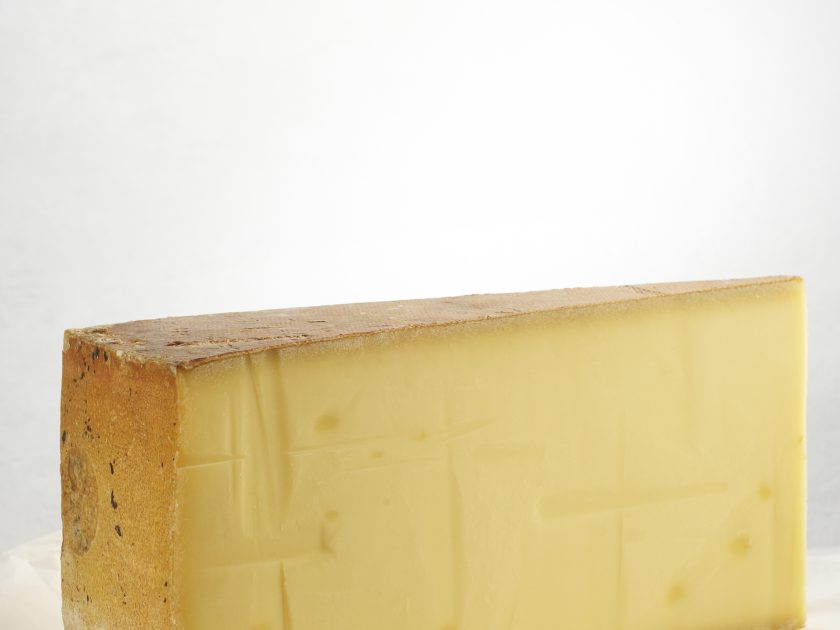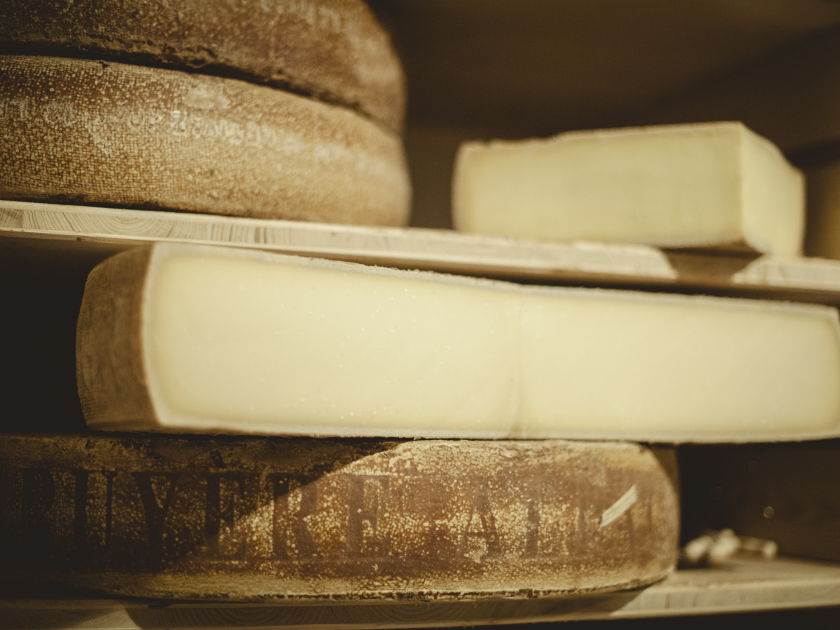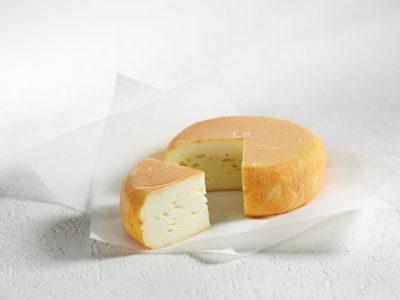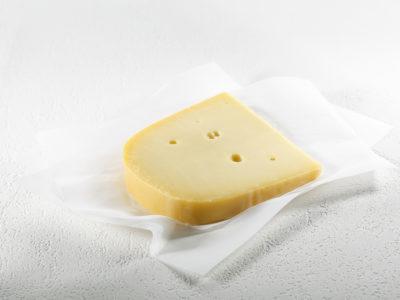Gruyère
“Cheeses used daily and for cooking”Gruyère français (French Gruyère)
The famous French Gruyère – not to be confused with its Swiss counterpart – has been produced in the Franche Comté and Rhône Alpes regions since the 13th century. The word « Gruyère » is derived from Gruyer officers, an institution of tax collectors founded by Charlemagne; in the territories that would later become France and Switzerland, taxes were sometimes collected in the form of cheeses. Today, near Annecy, there is still a village named « Gruyères »; and there is another in Switzerland named « Gruyère ».
French Gruyère can be recognized by the slight bulge of its surface and the presence of small eyes in the paste. A yellow casein plaque applied to the edge of the wheel assures its traceability.
The cheese is generally matured for six to twelve months.
Gruyère possesses a thin, dry, smooth, brown rind that becomes darker with maturity. The color of its paste can be pale if its milk is produced in the winter or golden yellow if it is produced in the summer. Hazelnut-sized holes are spread evenly throughout its very compact, smooth paste.
Health & nutrition
Flavours & sensory qualities
A cheese with a fruity or sometimes buttery or woody taste and a tangy, salty flavor. The flavors are very persistent in the mouth. Its texture varies from soft to firm and brittle, but is always soft in the mouth, giving it a well-rounded feeling. It can sometimes become slightly sharp when it has been matured for a long time.
 繁體中文
繁體中文  简体中文
简体中文  한국어
한국어  Français
Français 





